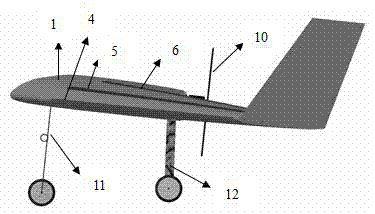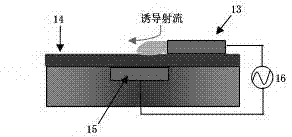Plasma unmanned aerial vehicle
A technology of plasma and aircraft, applied in the field of aviation, can solve the problems of increasing aircraft weight, increasing aircraft range and flight time, control failure, etc., and achieve the effects of enhancing the ability to resist reverse pressure gradients, inhibiting flow separation, and improving aerodynamic performance
- Summary
- Abstract
- Description
- Claims
- Application Information
AI Technical Summary
Problems solved by technology
Method used
Image
Examples
Embodiment Construction
[0031] Embodiments of the present invention will be described in detail below in conjunction with the accompanying drawings.
[0032] Such as figure 1 with figure 2 As shown, a plasma aircraft mainly includes a fuselage 1, a left wing 2 and a right wing 3, the left wing 2 and the right wing 3 are respectively connected to both sides of the fuselage 1, and the left and right wings 2 The first plasma exciters 4, 7 are respectively arranged at the leading edge of , 3, the second plasma exciters 5, 8 are respectively arranged at the chord line, and the third plasma exciters 6, 9 are respectively arranged at the maximum thickness. The aircraft also includes a power unit 10 , a front landing gear 11 and a rear landing gear 12 . The aircraft layout is not limited to the flying wing layout, and may be a conventional layout or other layout types.
[0033] Such as image 3 As shown, the plasma actuator is a mass barrier discharge plasma actuator, including two asymmetric electrodes...
PUM
 Login to View More
Login to View More Abstract
Description
Claims
Application Information
 Login to View More
Login to View More - R&D
- Intellectual Property
- Life Sciences
- Materials
- Tech Scout
- Unparalleled Data Quality
- Higher Quality Content
- 60% Fewer Hallucinations
Browse by: Latest US Patents, China's latest patents, Technical Efficacy Thesaurus, Application Domain, Technology Topic, Popular Technical Reports.
© 2025 PatSnap. All rights reserved.Legal|Privacy policy|Modern Slavery Act Transparency Statement|Sitemap|About US| Contact US: help@patsnap.com



